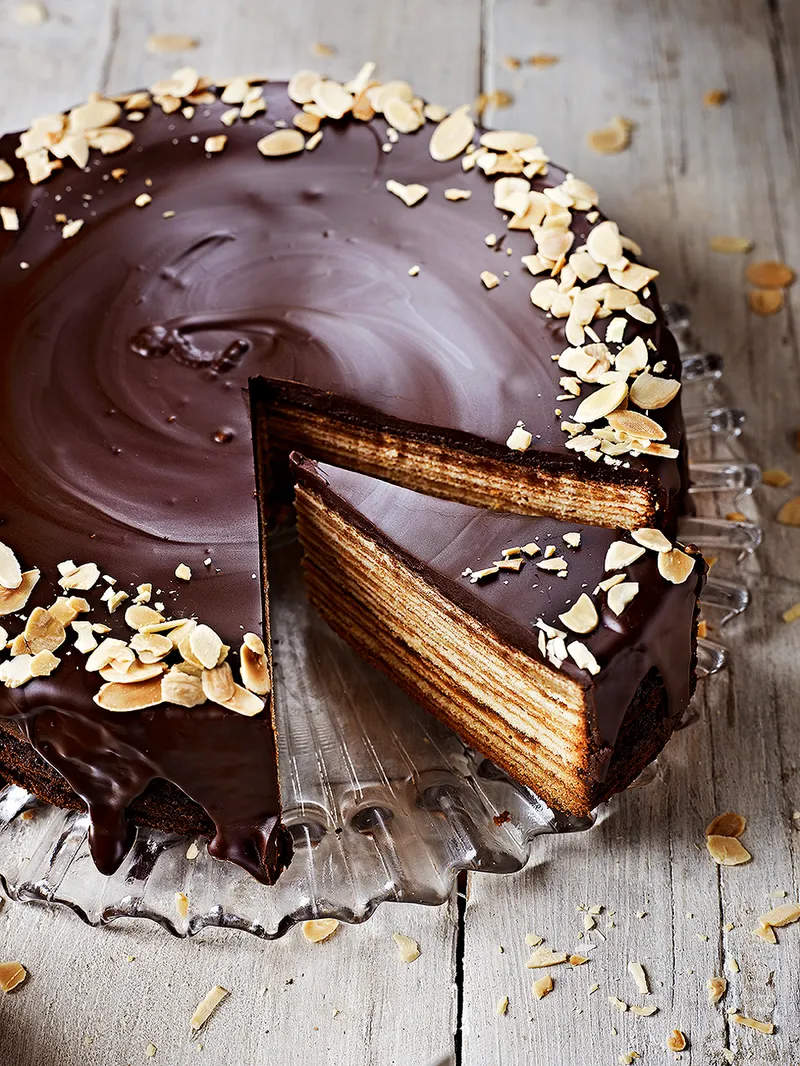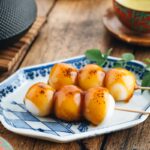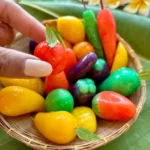Asian desserts offer a wide variety of flavors and textures, making them unique and delightful to explore. From chewy mochi to crispy fried bananas, there’s something for everyone to enjoy.
Whether you have a sweet tooth or are just curious about different culinary traditions, Asian desserts provide a deliciously diverse experience. These treats not only satisfy your sugar cravings but also introduce you to the rich cultural heritage behind each recipe.
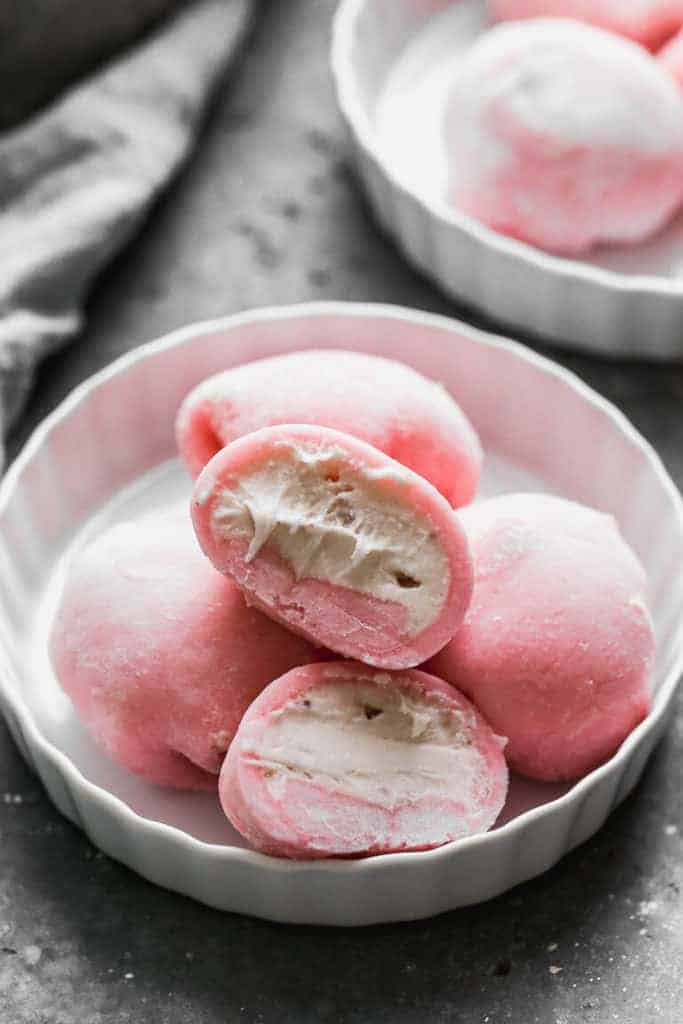
1) Mochi Ice Cream
Mochi ice cream is a popular Japanese dessert. It combines creamy ice cream with chewy mochi, made from sweet rice flour. The result is a unique texture and flavor that many enjoy.
Making mochi ice cream at home is simple. First, you mix sweet rice flour, sugar, and water. Microwave the mixture until it becomes stretchy and smooth.
Next, you wrap small scoops of ice cream in the mochi dough. This step can be tricky, but keeping your hands and tools wet helps prevent sticking.
Freeze the wrapped ice cream balls until firm. This ensures they hold their shape.
You can use various ice cream flavors. Green tea, strawberry, and vanilla are common choices. This dessert is versatile and appeals to many tastes.
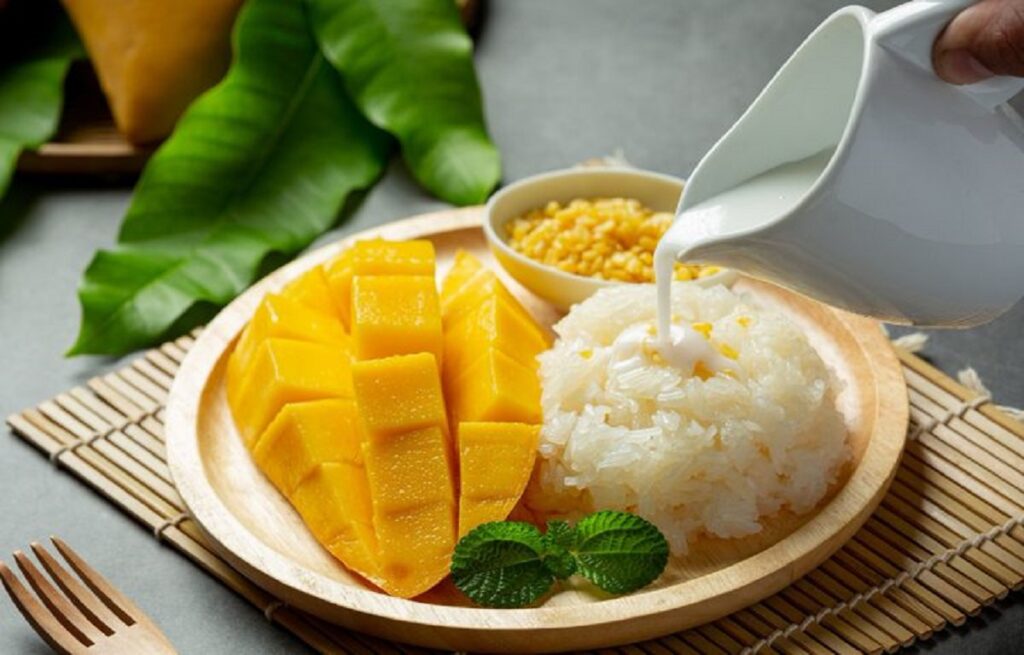
2) Mango Sticky Rice
Mango Sticky Rice is a beloved Thai dessert. It combines sweet mango with sticky rice and coconut milk to create a delicious treat.
To make it, start with sticky rice. Soak the rice in lukewarm water for about 20 to 30 minutes. This helps soften the grains.
Steam the soaked rice for 20 to 30 minutes. You can use aluminum balls or a muslin cloth to help steam it properly.
While the rice is steaming, prepare the sweet coconut milk mixture. Mix coconut milk, sugar, and a pinch of salt in a pan. Heat this until the sugar dissolves.
Once the rice is done, transfer it to a bowl. Pour the hot coconut milk mixture over the rice and stir well. Cover and let it rest for a few minutes so the rice absorbs the coconut milk.
Slice fresh, ripe mangoes to serve with the sticky rice. The sweetness of the mango pairs perfectly with the creamy coconut rice.
Serve the Mango Sticky Rice warm, and enjoy this classic Thai dessert.
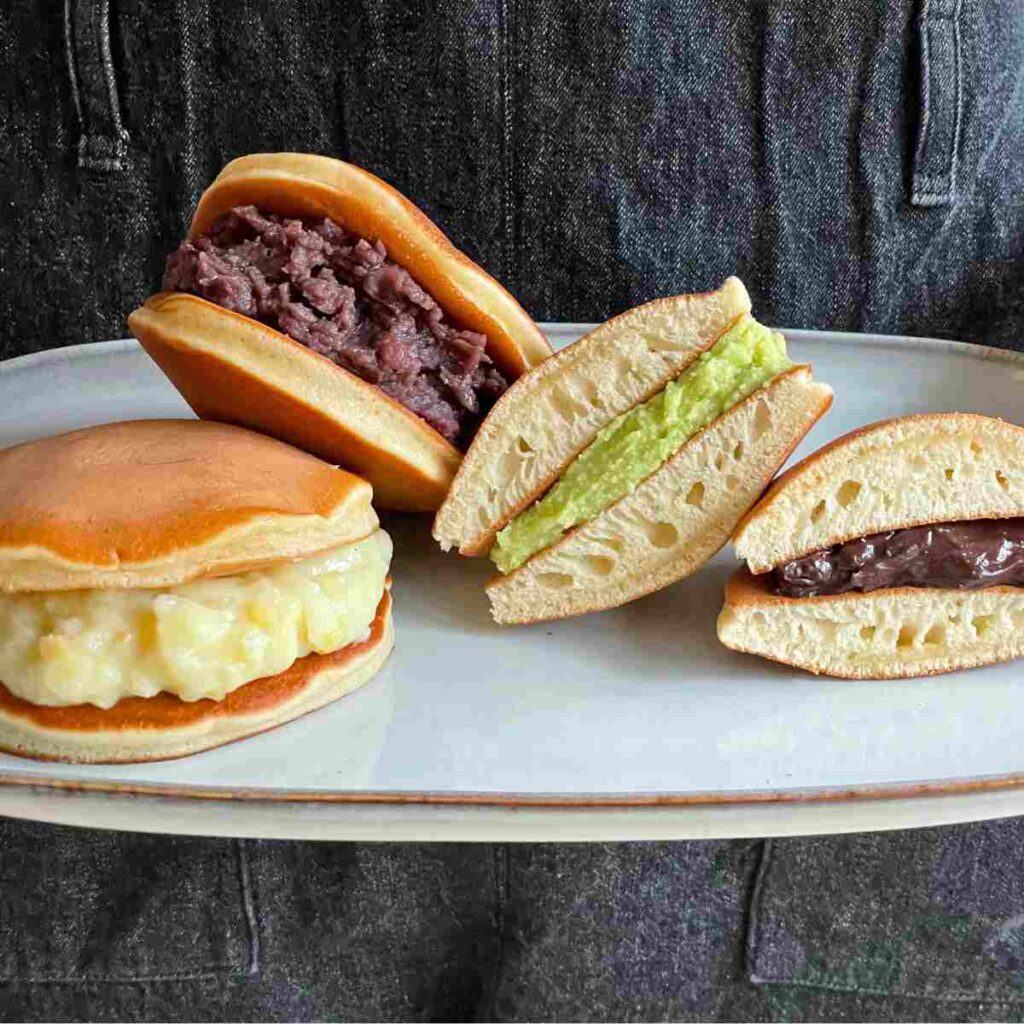
3) Dorayaki
Dorayaki is a popular Japanese dessert. It’s made of two pancake-like pieces filled with sweet red bean paste. These pancakes are light, fluffy, and slightly sweet.
To make Dorayaki, you start by mixing eggs, sugar, and honey in a bowl. You then sift in flour and baking powder. Once mixed, let the batter rest for a while.
The pancakes are cooked on a non-stick pan. You drop the batter to form small circles and cook until bubbles form. Then, flip and cook briefly on the other side.
After cooking, spread sweet red bean paste on one pancake and place another on top. Enjoy Dorayaki fresh or store them for later.
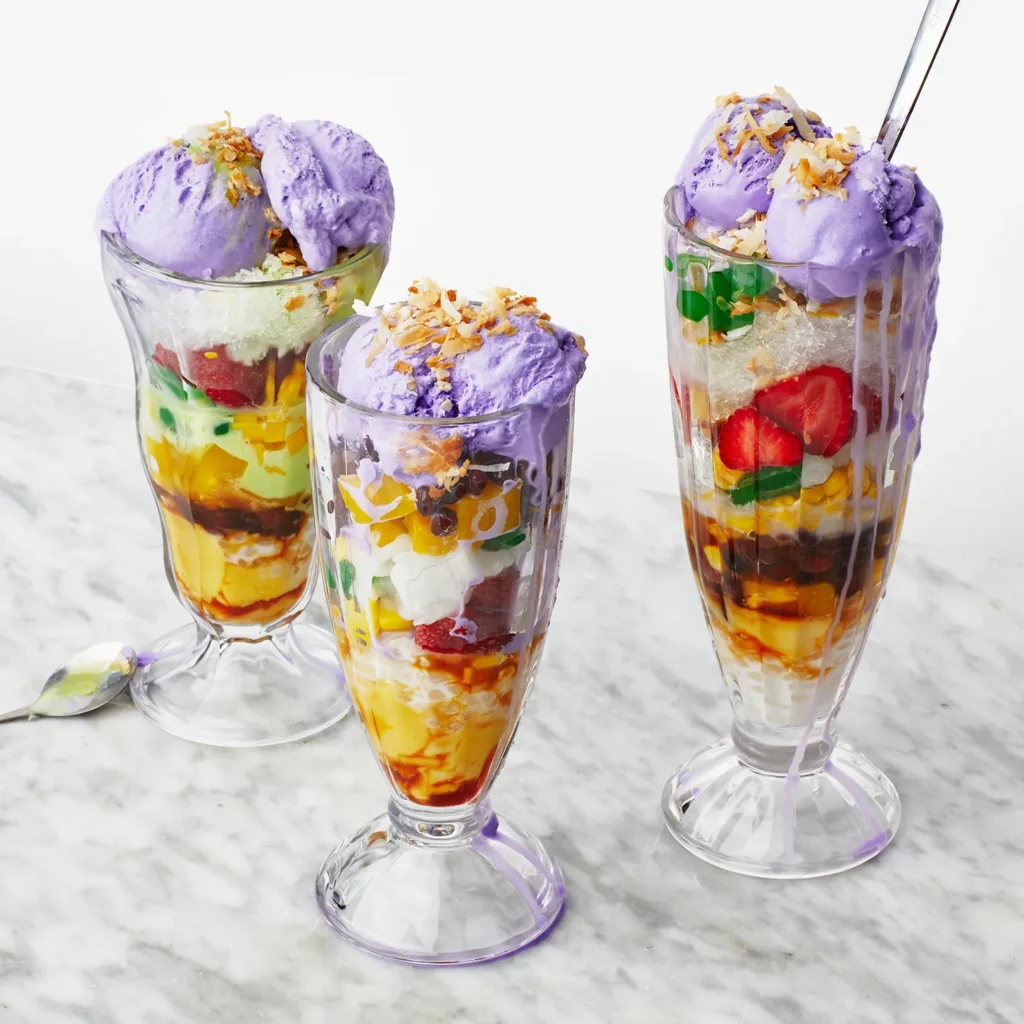
4) Halo-Halo
Halo-Halo is a popular Filipino dessert known for its bright colors and myriad of flavors. The name “Halo-Halo” means “mix-mix” in Filipino, reflecting the dessert’s mix of ingredients.
You start by gathering the essentials: shaved ice, evaporated milk, and a variety of add-ins. Common add-ins include sweet beans, jellies, and fruit like jackfruit and bananas.
Begin by layering the add-ins in a tall glass until it’s about one-third full. Pack the glass with shaved ice, then drizzle it with evaporated milk.
Top your Halo-Halo with leche flan or a scoop of ice cream, often ube or mango flavored. Some recipes also suggest adding crispy rice cereal for an extra crunch.
The joy of Halo-Halo lies in mixing it all together before eating. Each bite offers a blend of textures and tastes, making it a refreshing treat, especially in warm weather.
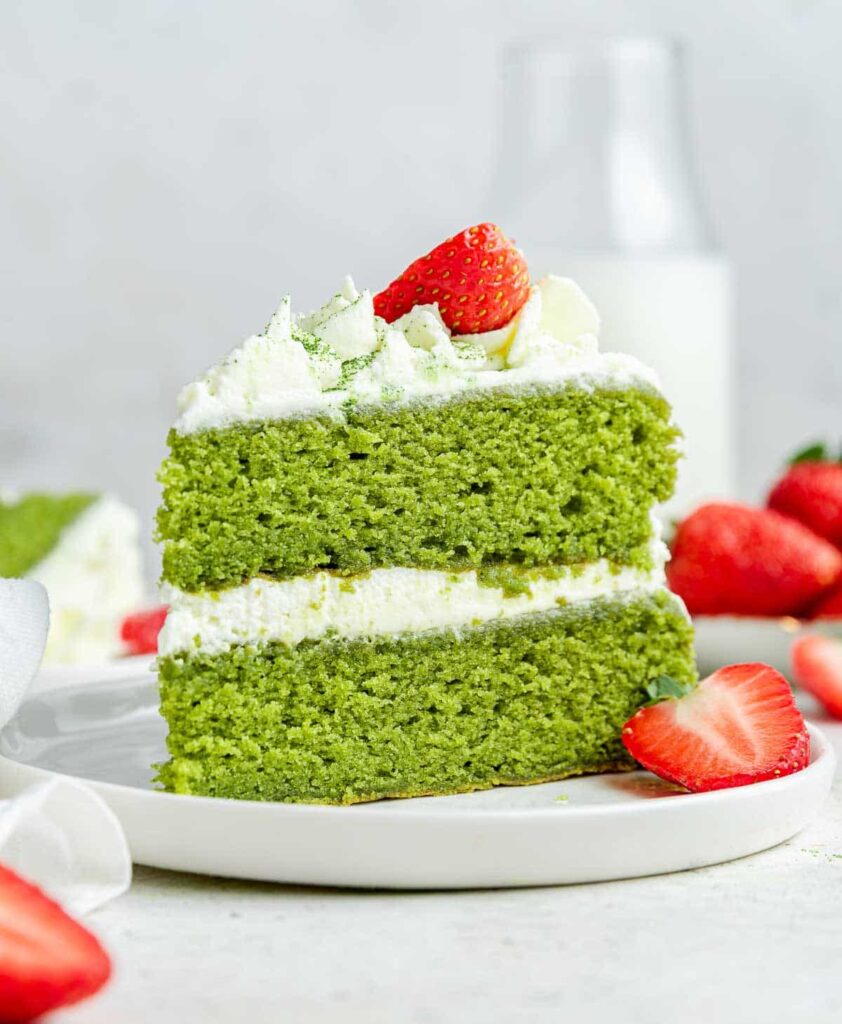
5) Matcha Green Tea Cake
Matcha Green Tea Cake is a popular dessert in Japanese cuisine. It combines the bright, earthy flavor of matcha powder with the sweetness of cake. This creates a unique and delicious treat that’s perfect for tea lovers.
To begin, you need to make the cake batter. Mix softened butter and sugar until they are light and fluffy. Add eggs, matcha powder, and vanilla, and beat until just combined. In another bowl, whisk together flour and baking powder, then gently fold this into the butter mixture.
For a smooth texture, make sure to sift the dry ingredients before mixing. This helps to avoid lumps in the batter. When baking, use a low-medium heat to cook the cake evenly without browning the top too much.
After baking, let the cake cool completely before adding any toppings. You might want to dust with extra matcha powder or add a light frosting. The green tea adds a subtle bitterness that pairs beautifully with sweet elements.
Matcha Green Tea Cake is not only tasty but also visually stunning. The vibrant green color makes it a standout dessert. Enjoy this cake with a cup of green tea for a perfect pair.
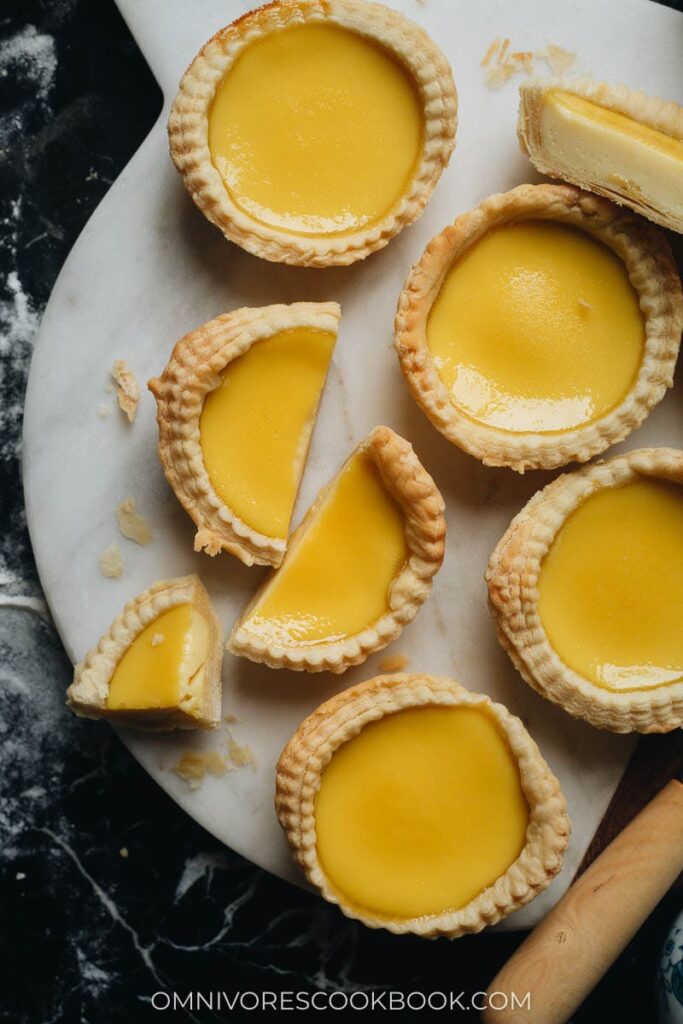
6) Egg Tarts
Egg tarts, popular in many Asian countries, offer a delightful mix of flaky pastry and smooth, sweet custard. You may know them as a dim sum favorite, especially in Hong Kong and China.
The crust is usually made from a butter-based dough, which you roll out and cut into smaller circles. These circles are then fitted into tart tins.
For the custard filling, you mix eggs, sugar, and evaporated milk. The mixture is poured into the tart shells, filling them up to about 70% to avoid overflow during baking.
Egg tarts are baked at a moderate temperature, around 320°F to 375°F. This ensures the custard sets smoothly while the crust turns golden and crisp.
When done right, egg tarts have a glassy, shiny surface on the custard, adding to their visual appeal.
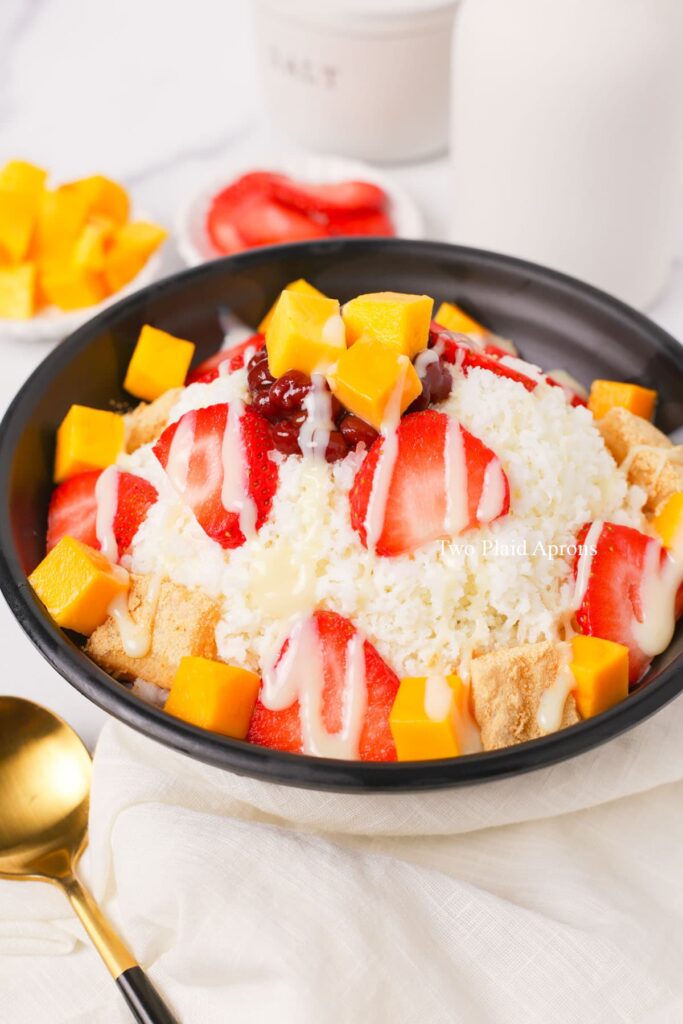
7) Bingsu
Bingsu is a popular Korean dessert, known for its refreshing and soft texture. It’s made from finely shaved ice, often flavored with milk or sweetened condensed milk, making it creamy and delicious.
You start by mixing milk and condensed milk together. Pour the mixture into an ice cube tray and freeze it overnight. This creates the base for your bingsu.
Once the milk cubes are completely frozen, use a food processor or a shaved ice machine to grind them into a fine, snowy texture. This will give the dessert its signature fluffy appearance.
To assemble, place the shaved ice into a chilled bowl. Top it with a variety of options like fresh fruits, chewy rice cakes, or red bean paste. Drizzle more sweetened condensed milk over the top for extra sweetness.
One popular variation is Mango Bingsu. Cook mango puree with sugar and lemon juice to make a simple syrup. Chill it before pouring over the shaved ice, adding fresh mango chunks for a tropical touch.
Experiment with different toppings and flavors to make your bingsu unique. It’s a fun and customizable dessert perfect for hot summer days.
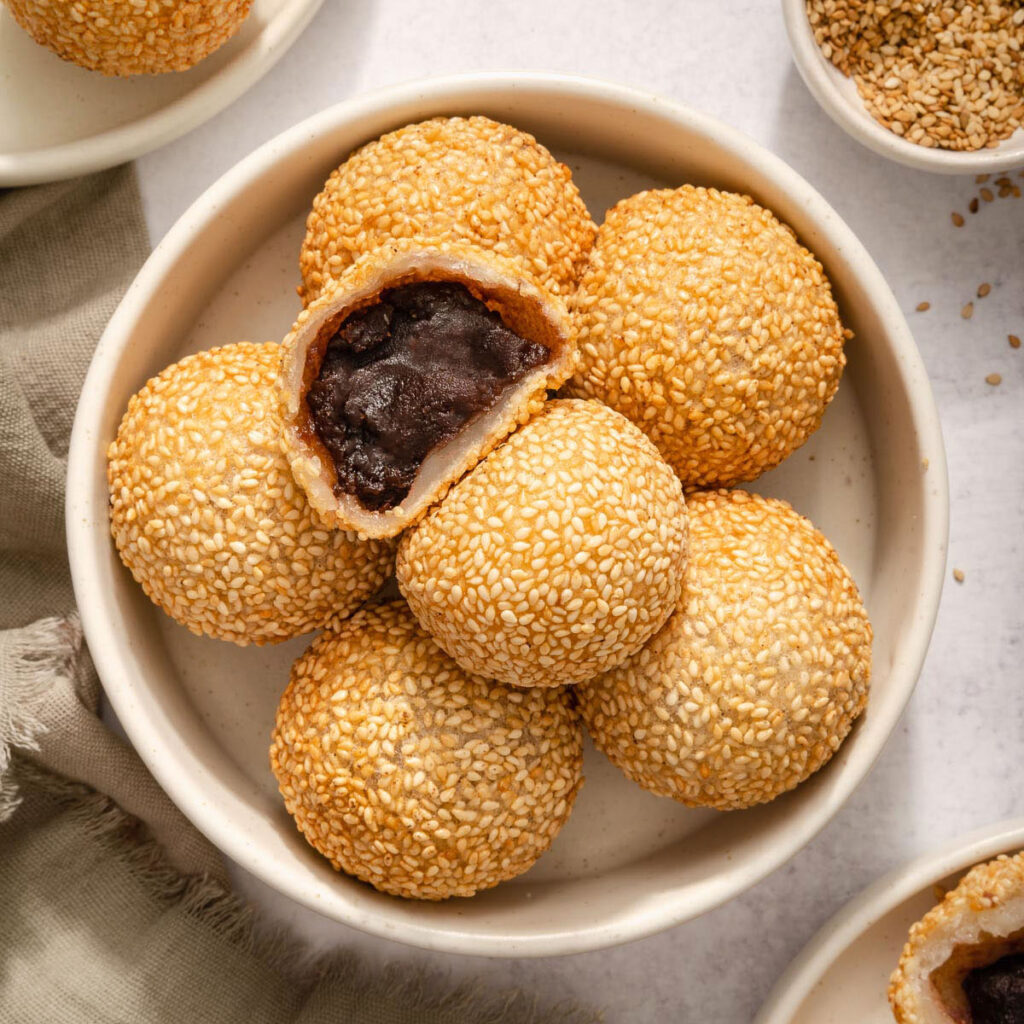
8) Sesame Balls
Sesame Balls are a popular Asian dessert called Jian Dui. You can find them in many Chinese bakeries and dim sum restaurants.
They are made from glutinous rice flour, which gives them a chewy texture. The dough is often filled with sweet red bean paste, but other fillings like lotus seed paste are used too.
To make sesame balls, mix glutinous rice flour with sugar and water to form a smooth dough. Divide the dough into small portions, flatten them, and add the filling before rolling them into balls.
The balls are then rolled in sesame seeds. This helps create a crunchy exterior once they are fried.
Fry the sesame balls in oil heated to around 300F, then increase the heat to 350F to achieve a golden brown color. Ensure they are cooked evenly by stirring occasionally.
Once fried, place the sesame balls on a wire rack or paper towel to drain excess oil. Serve warm for the best flavor and texture.
This dessert is delightful with its contrast between the crispy outside and soft, chewy inside. The sweet filling adds to its irresistible taste.
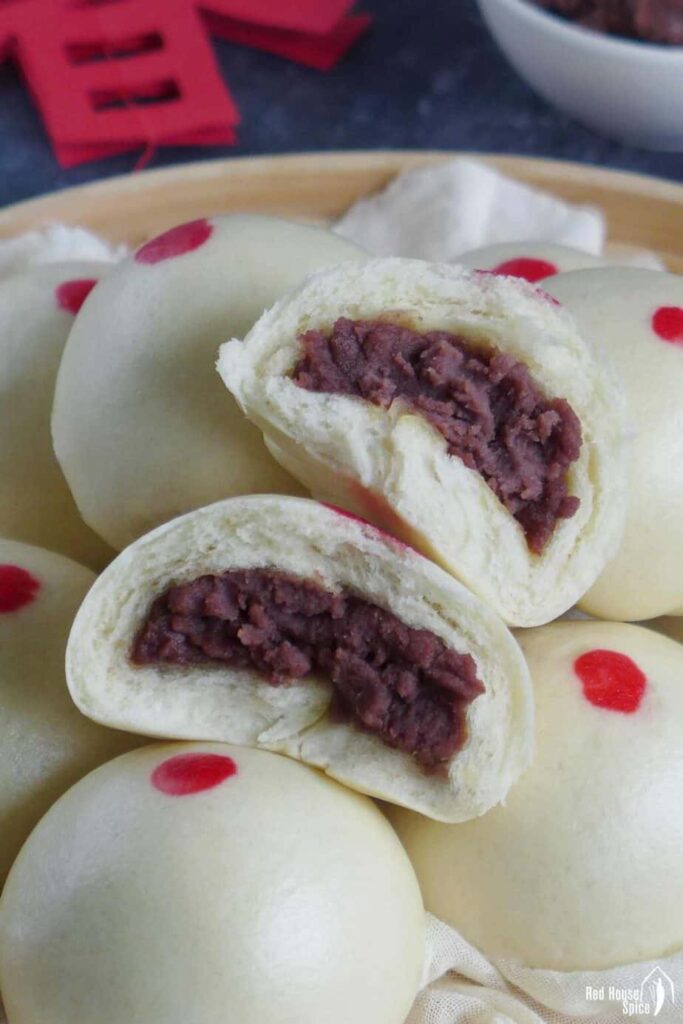
9) Red Bean Buns
Red Bean Buns, also known as Dou Sha Bao, are a popular Asian dessert. They are soft, fluffy buns filled with sweet red bean paste.
To make the dough, you’ll start by dissolving yeast in lukewarm water with a bit of sugar. This helps the yeast activate. Then, you’ll mix in flour, powdered sugar, and salt. You can use a mixer with a dough hook to knead the dough until it’s smooth and elastic.
The red bean paste is made by cooking red beans until they are soft. Then, you’ll mash or process them into a thick paste. Add sugar to sweeten and butter to achieve a smooth texture. Make sure to let the paste cool before using it.
When assembling the buns, place a spoonful of red bean paste in the center of each dough piece. Seal the buns well so the filling doesn’t leak out during steaming. Place them in a steamer and let them proof for 45 minutes until they plump up.
Steam the buns over boiling water for about 10-12 minutes. It’s important not to over-steam so the buns stay soft and fluffy. Once done, let them cool slightly before enjoying.
Red Bean Buns are a delightful treat, perfect for any occasion.
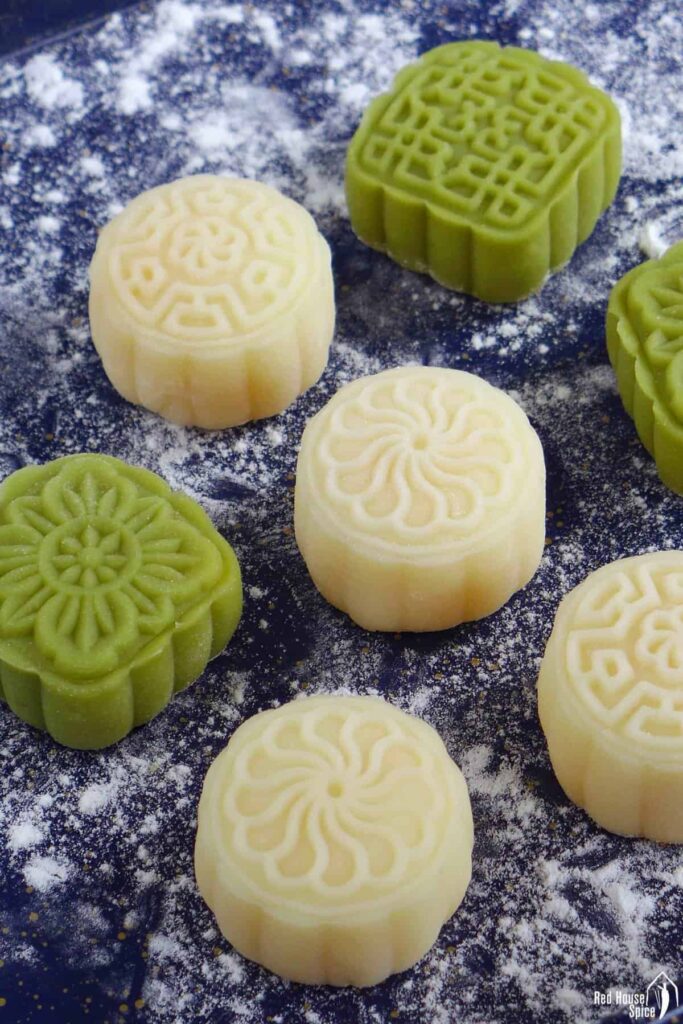
10) Snow Skin Mooncakes
Snow skin mooncakes are a no-bake treat often enjoyed during the Mid-Autumn Festival. Unlike traditional mooncakes, these have a chewy, mochi-like exterior made with glutinous rice flour.
To make the dough, mix powdered sugar, milk, and oil in a bowl. Sift in sweet rice flour, rice flour, and wheat starch. Stir until smooth without lumps.
Steam or microwave the dough mixture until solid. After cooling, knead it to a smooth consistency. This forms the “snow skin.”
For the filling, you can use taro, custard, or other sweet pastes. Prepare the filling by steaming ingredients like taro until soft, then mashing and mixing.
Shape the dough into small balls and flatten them. Place a filling ball in the center and wrap the dough around it.
Use a mooncake mold to press the filled dough into shape. Press firmly, then release the mooncake. Eat snow skin mooncakes on the day they are made for the best texture.
These mooncakes are known for their delicate, chewy skin and flavorful fillings. They provide a refreshing contrast to baked mooncakes with their unique texture and taste.
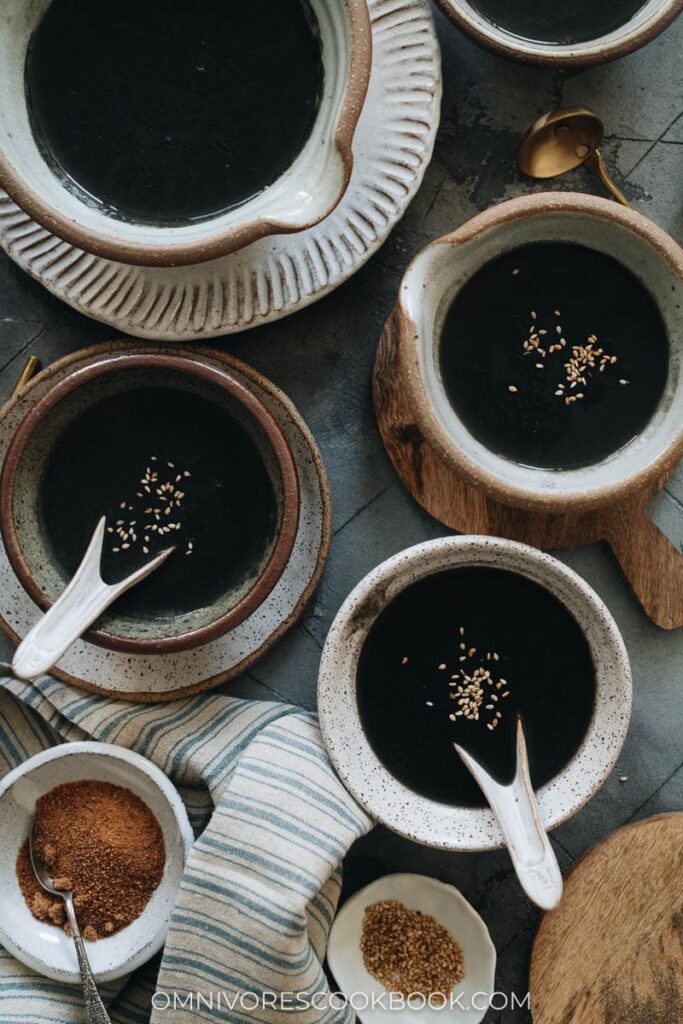
11) Black Sesame Soup
Black Sesame Soup is a traditional Chinese dessert that is known for its smooth and nutty flavor. This warm, comforting soup is made with black sesame seeds, which give it a rich, dark appearance.
To make Black Sesame Soup, you begin by roasting black sesame seeds until they are fragrant. Once roasted, the seeds are ground into a fine powder. This powder is then combined with water and a sweetener such as rock sugar or honey.
The mixture is cooked on medium heat, stirring constantly to prevent lumps from forming. The soup should be smooth and slightly thick. If it gets too thick, you can add more water until it reaches your desired consistency.
Some recipes suggest adding a small amount of rice to give the soup a creamier texture. You can also add a teaspoon of sesame oil for extra flavor.
Black Sesame Soup is typically served warm, making it a perfect treat for cooler weather. Its unique taste and smooth texture make it a favorite among many.
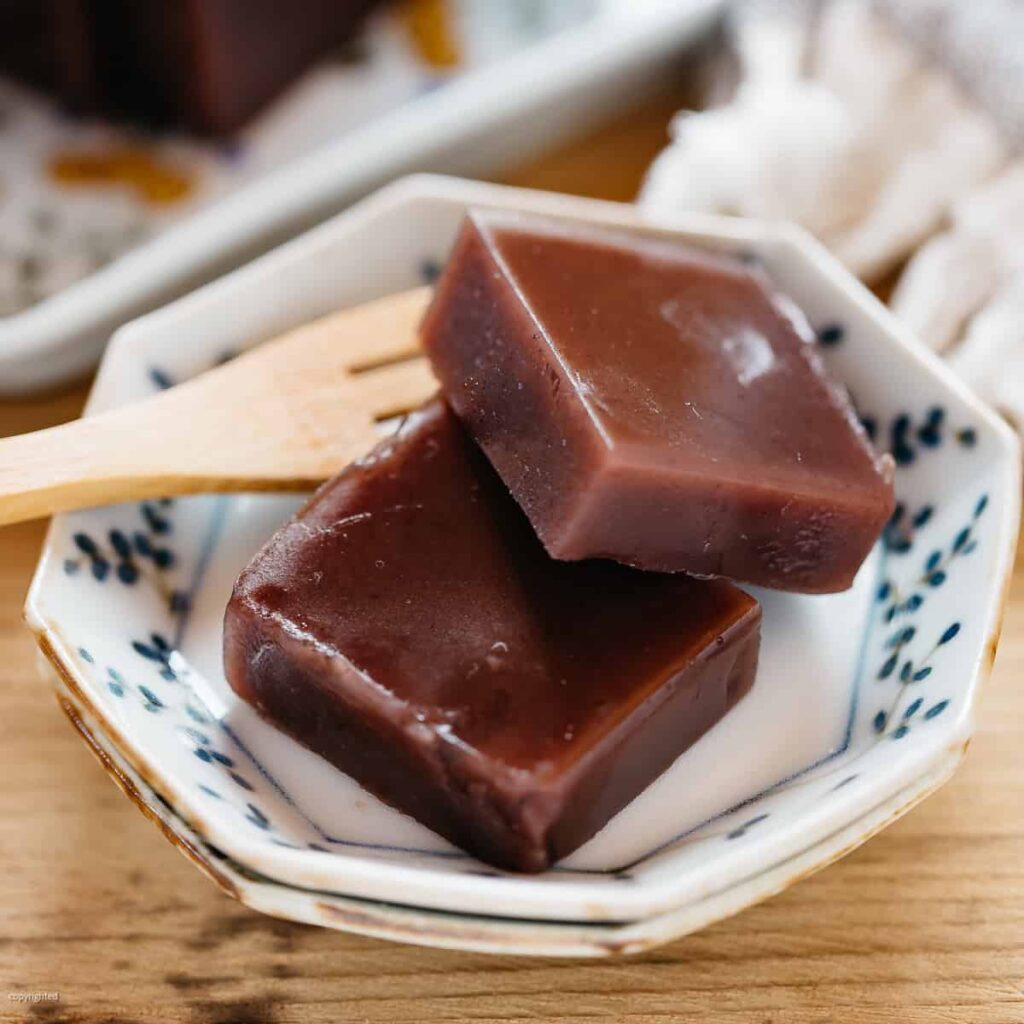
12) Yokan
Yokan is a classic Japanese dessert made from red bean paste, sugar, and agar-agar. It is enjoyed in the form of a firm jelly, cut into bite-sized pieces.
There are two main types of yokan. The first type is neri yokan, which is firm and dense. The second type is mizu yokan, which is lighter and usually served chilled, making it a perfect summer treat.
To make yokan, you mix red bean paste and agar-agar with water and sugar. The mixture is then poured into molds and left to cool until set.
This dessert has a subtly sweet taste and a smooth texture. You can find yokan in different flavors like matcha (green tea) or chestnut, but the traditional red bean flavor remains the most popular.
When serving, you might enjoy yokan with green tea to balance its sweetness. It is a versatile dessert that appeals to both traditional and modern tastes.
Yokan is not just tasty but also visually appealing. Its translucent, block-like shape makes it a delightful addition to any dessert platter.
Enjoy exploring the flavors and textures of this elegant Japanese dessert.
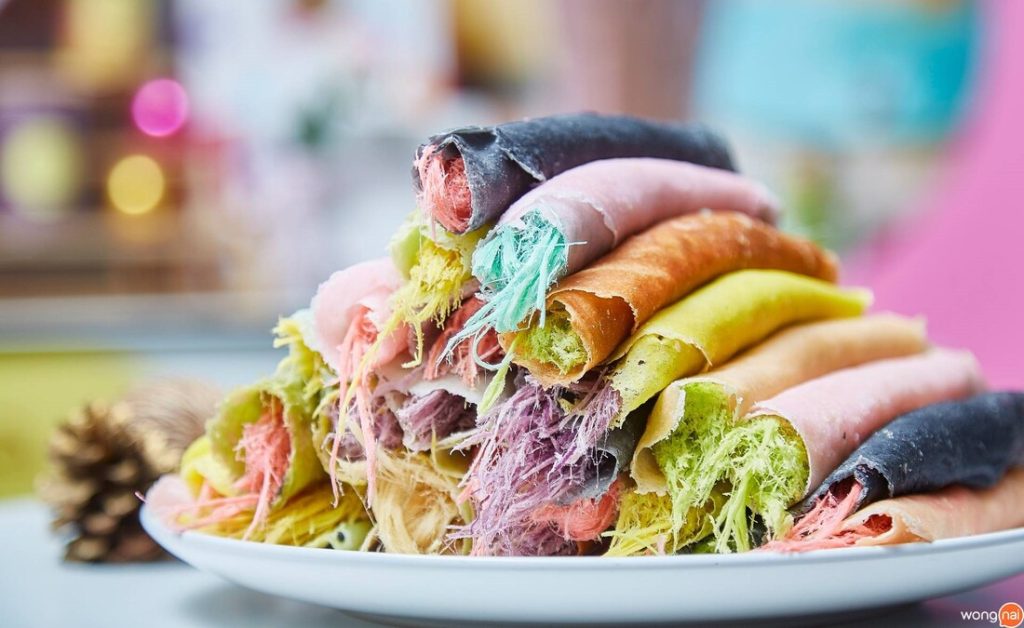
13) Roti Sai Mai
Roti Sai Mai is a popular Thai dessert often found in Ayutthaya. It’s a sweet treat made from two main parts: a thin, pan-fried roti and colorful strands of candy floss.
You can think of Sai Mai as the Thai version of cotton candy. It’s made by hand and comes in various colors. The roti, originally thicker, is now paper-thin and used to wrap the Sai Mai.
Many flavors of roti are available. Pandan, strawberry, and banana are favorites. When wrapped around the candy floss, the roti adds a chewy texture to the sweet, fluffy candy.
You often see Roti Sai Mai sold by street vendors in Ayutthaya. The dessert has become a notable part of the city’s identity.
To enjoy Roti Sai Mai, you simply roll the strands of candy into the roti and fold it up. It’s a fun and tasty experience you shouldn’t miss when visiting Thailand.
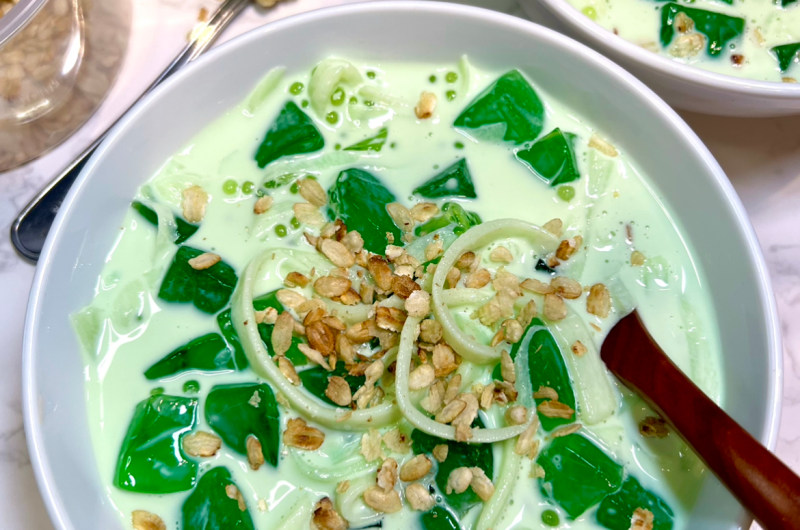
14) Buko Pandan
Buko Pandan is a popular dessert from the Philippines. It combines the fresh taste of young coconut with the unique flavor of pandan leaves. This dessert is both refreshing and satisfying, perfect for hot days.
To make Buko Pandan, you start with fresh young coconut. You’ll need to shred it into fine pieces. Next, prepare the pandan jelly, which adds a bright green color and a fragrant aroma to the dish.
In a mixing bowl, combine the shredded young coconut with condensed milk and evaporated milk. Some recipes also use heavy cream for a richer taste. Add sugar to sweeten the mixture. Once the sugar dissolves, gently fold in the pandan jelly cubes.
Chill the Buko Pandan in the refrigerator for at least an hour. This allows the flavors to meld together. When ready to serve, make sure the dessert is cold for the best taste. Buko Pandan is often topped with vanilla ice cream for an added treat. Enjoy this classic Filipino dessert as a delightful end to any meal.
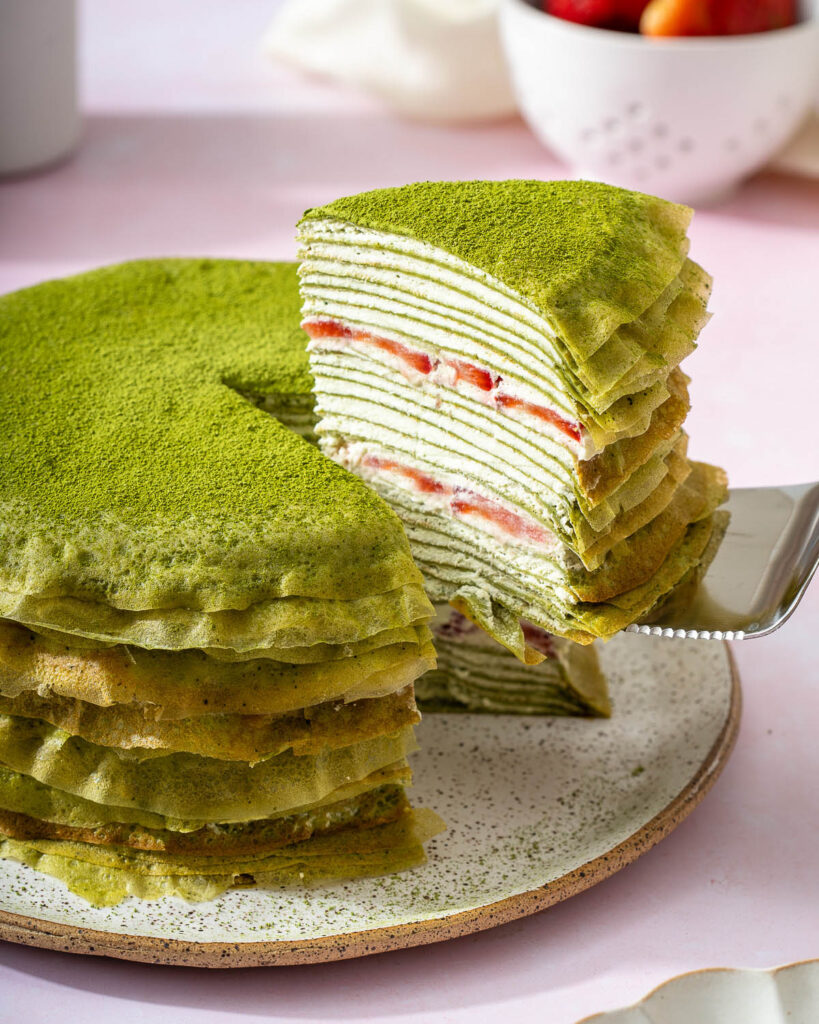
15) Green Tea Mille Crepe
Green Tea Mille Crepe is a delightful Japanese dessert. It has thin layers of green tea-flavored crepes stacked with light whipped cream. Each bite gives you a balanced taste of slightly bitter matcha and creamy sweetness.
To make this dessert, you start by preparing a matcha-flavored crepe batter. It’s a mix of cake flour, baking powder, and matcha powder. You whisk these dry ingredients into a smooth, lump-free batter.
Next, you cook the crepes in a frying pan. Use a ¼ cup of batter for each crepe. Cook one side for about 2 minutes, then flip and cook the other side for another 30 seconds.
Once all the crepes are ready, you start layering. Spread a thin layer of whipped cream between each crepe. Continue until you stack 10 to 12 crepes. Chill the assembled cake in the fridge for a few hours before serving.
This simple yet elegant dessert is perfect for matcha enthusiasts. The vibrant green color also makes it a standout on any dessert table.
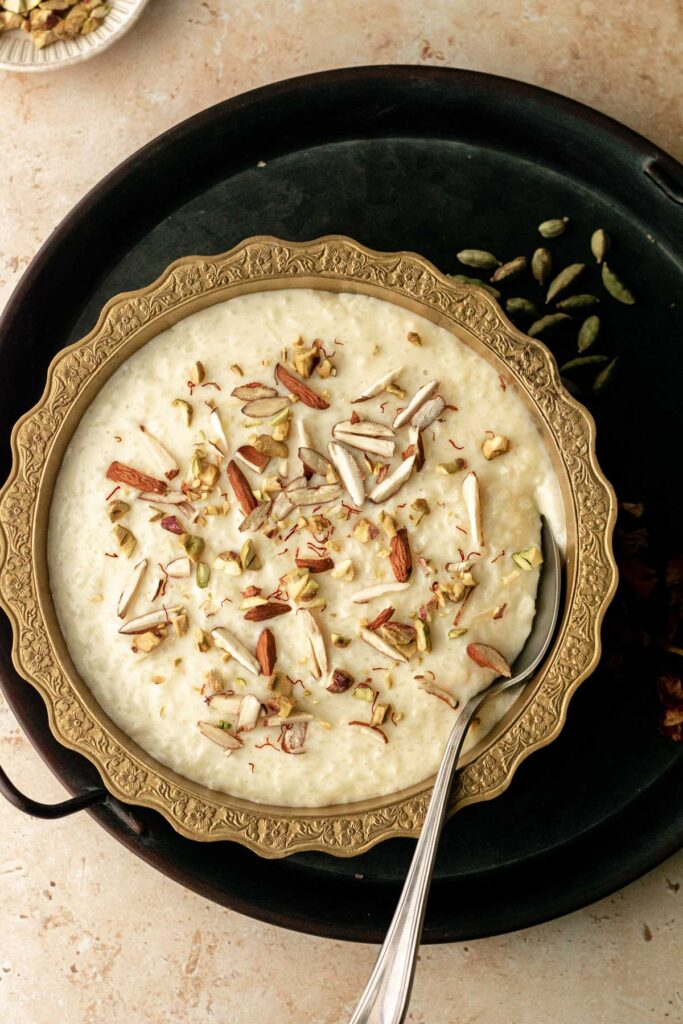
16) Kheer
Kheer is a traditional South Asian rice pudding enjoyed by many. It is made with simple ingredients like rice, milk, and sugar.
To prepare kheer, you start by rinsing and cooking rice until it’s soft. You then combine the cooked rice with milk and sugar in a pot. Stir the mixture continuously to keep the milk from sticking.
You may add flavors like cardamom, rose water, and saffron to enhance the taste. Common garnishes include almonds, pistachios, and raisins. These not only add a delightful crunch but also make the dessert look appealing.
Kheer can be served hot or cold, making it versatile for different occasions. Its creamy and rich texture makes it a favorite comfort dessert. Whether for festivals or casual family meals, kheer is always a crowd-pleaser.
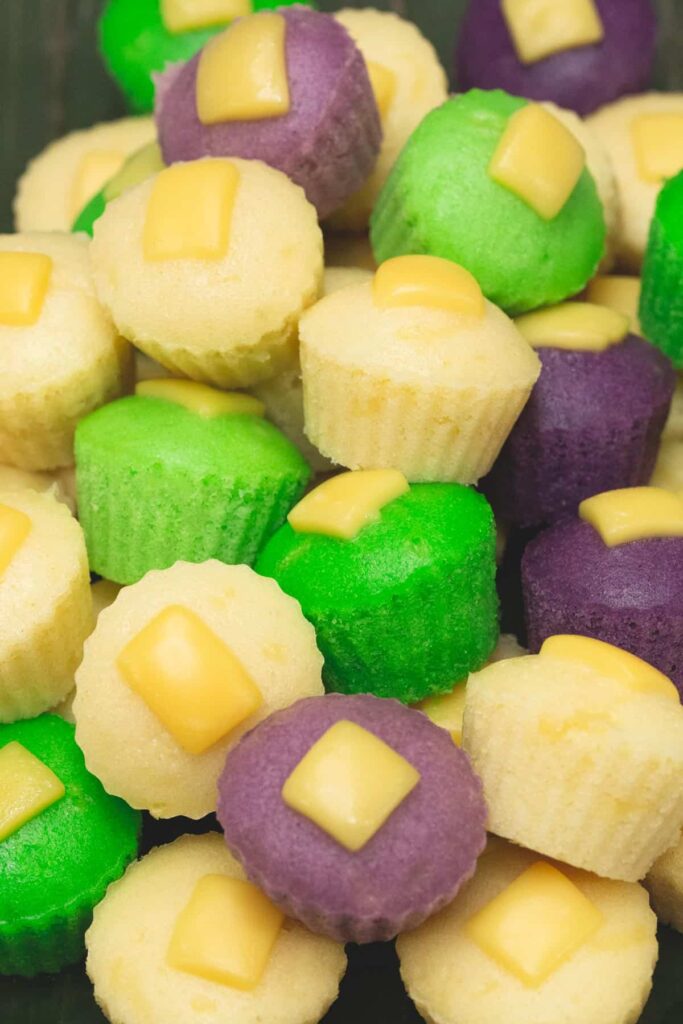
17) Puto
Puto is a popular Filipino steamed rice cake. It’s a lightly sweetened dessert that is often enjoyed for breakfast or as a snack.
To make puto, you need rice flour, sugar, baking powder, and salt. Mix these dry ingredients together in a bowl.
Add water and coconut milk to the dry mixture. Stir until the batter is smooth and well-blended. This step is crucial for a consistent texture.
Pour the batter into lightly oiled molds, filling them about three-quarters full. Steam the batter on medium heat for around 10 minutes.
You can check if the puto is done by inserting a toothpick into the center. If it comes out clean, the cakes are ready.
Some variations of puto include adding cheese on top before the final minute of steaming. This gives a salty contrast to the sweet cake.
Puto comes in various flavors and colors. Some modern versions use pandan for a distinct aroma and green color.
Once steamed, let the puto cool briefly before removing it from the molds. Enjoy it warm or at room temperature.
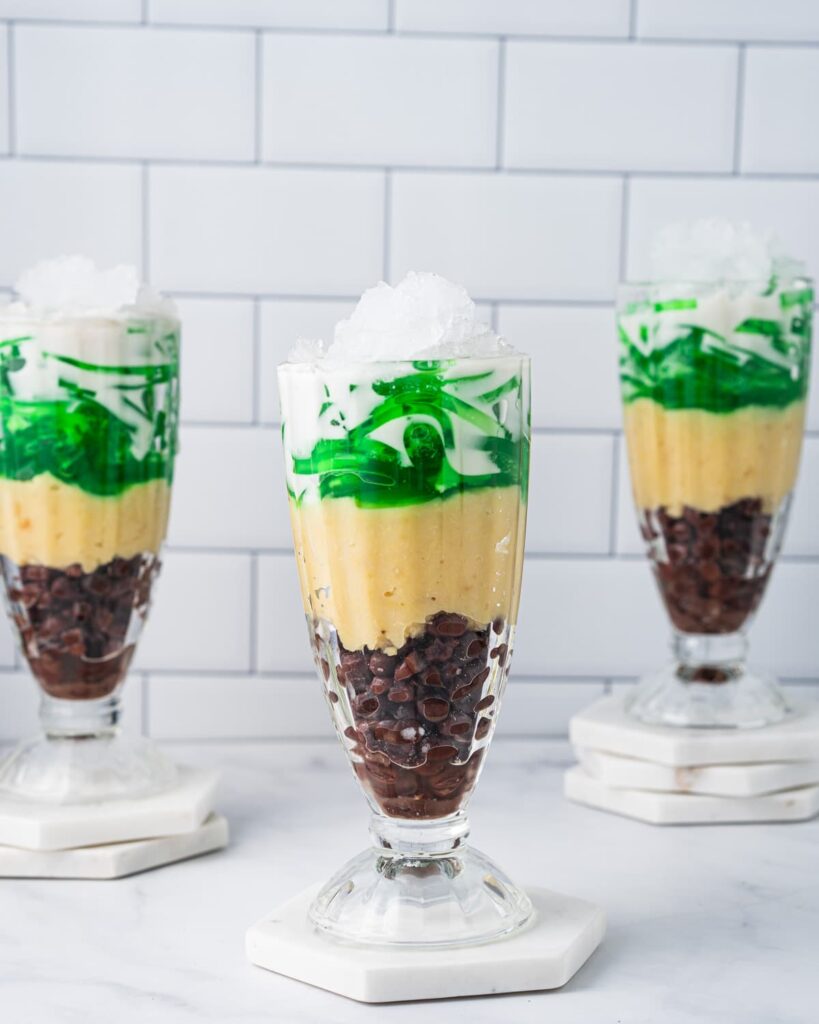
18) Che Ba Mau
Che Ba Mau, also known as Vietnamese Three Color Dessert, is a popular and refreshing treat.
The dessert includes three layers that each bring unique textures and flavors. These layers typically consist of mung beans, red beans, and green jelly.
To prepare the mung beans, you soak and cook them until they become soft.
For the red beans, you soak and cook adzuki beans, then sweeten them with a simple sugar syrup.
The green layer is made of pandan jelly. This jelly gets its vibrant color and distinct flavor from pandan leaves.
Each component is prepared separately and then layered in a glass.
When ready to serve, you add crushed ice and coconut milk on top.
The mix of textures from the beans and jelly, combined with the sweet coconut milk, makes for a delightful dessert.
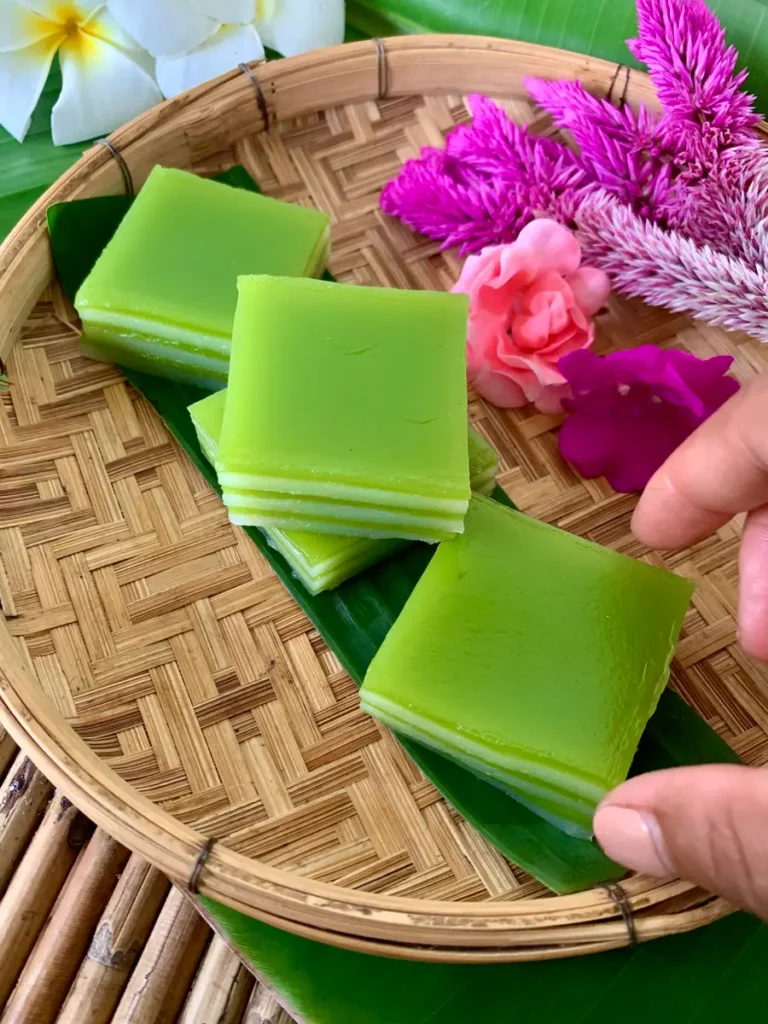
19) Khanom Chan
Khanom Chan is a traditional Thai dessert that consists of multi-colored, steamed layers of rice flour, coconut milk, and pandan juice. The name “Khanom Chan” literally means “layered dessert” in Thai. This dessert is often served at special occasions and festivals in Thailand.
To make Khanom Chan, you need to first prepare two mixtures: one with pandan juice for a green layer and one with coconut milk for a white layer. Each layer is steamed separately in a mold.
A key step in the process is to ensure the steamer lid is dry before covering the mold to prevent water droplets from ruining the layers. After steaming each layer for a few minutes, you add the next layer on top and steam it again until all layers are completed.
Khanom Chan has a soft, chewy texture and a sweet, fragrant taste thanks to the pandan and coconut milk. It is traditionally cut into diamond shapes before serving. This dessert not only tastes delicious but also looks beautiful with its colorful and smooth layers.
Enjoying Khanom Chan is like tasting a piece of Thai culture and tradition, making it a delightful experience for anyone who tries it.
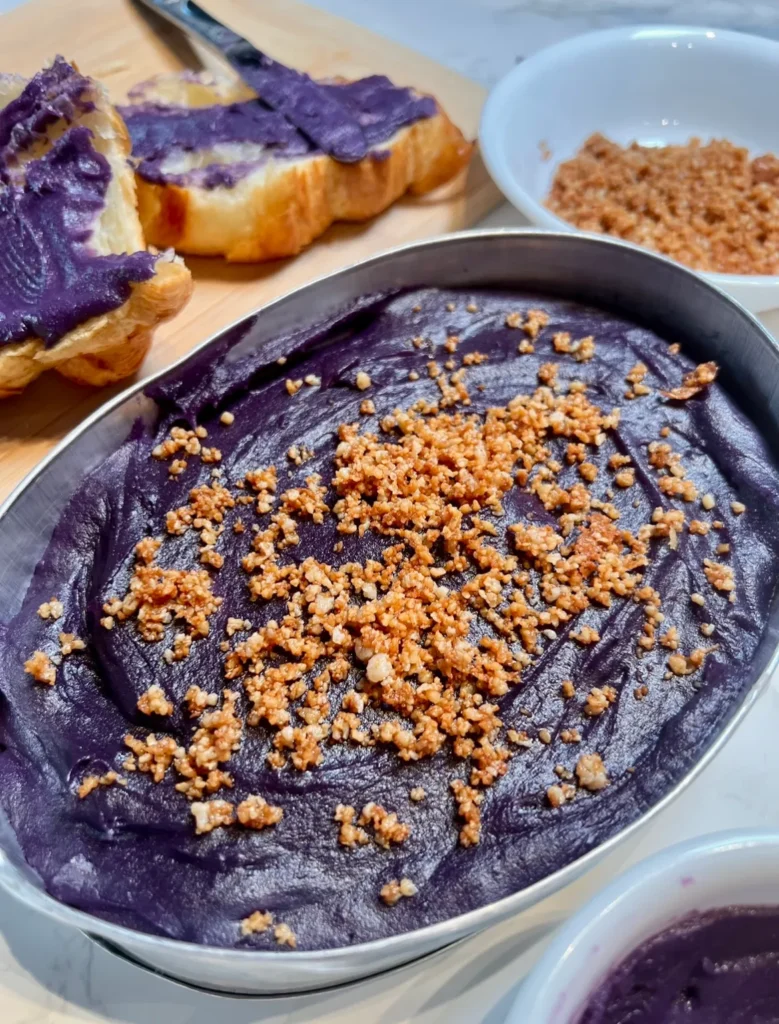
20) Ube Halaya
Ube Halaya is a traditional Filipino dessert made from purple yams. This dessert is known for its striking purple color and sweet, creamy taste. You can enjoy it on its own or use it as a filling for other treats like cakes and pastries.
To make Ube Halaya, you start by peeling and boiling the purple yams until they are soft. After boiling, you mash the yams until smooth. You will then cook the mashed yams in a pan with butter, evaporated milk, condensed milk, and sugar. Stir constantly to prevent burning.
The mixture will thicken as it cooks. Keep stirring until it becomes heavy and pulls away from the sides of the pan. Once it’s thick enough, transfer the Ube Halaya to a buttered mold or container. Let it cool to room temperature before serving.
Ube Halaya can be enjoyed in many ways. You can eat it plain or topped with cheese for extra flavor. It’s also a common ingredient in other Filipino desserts like Ube Cake or Ube Ice Cream. Whether you’re new to Ube Halaya or a long-time fan, this dessert is a delicious way to explore Filipino cuisine.
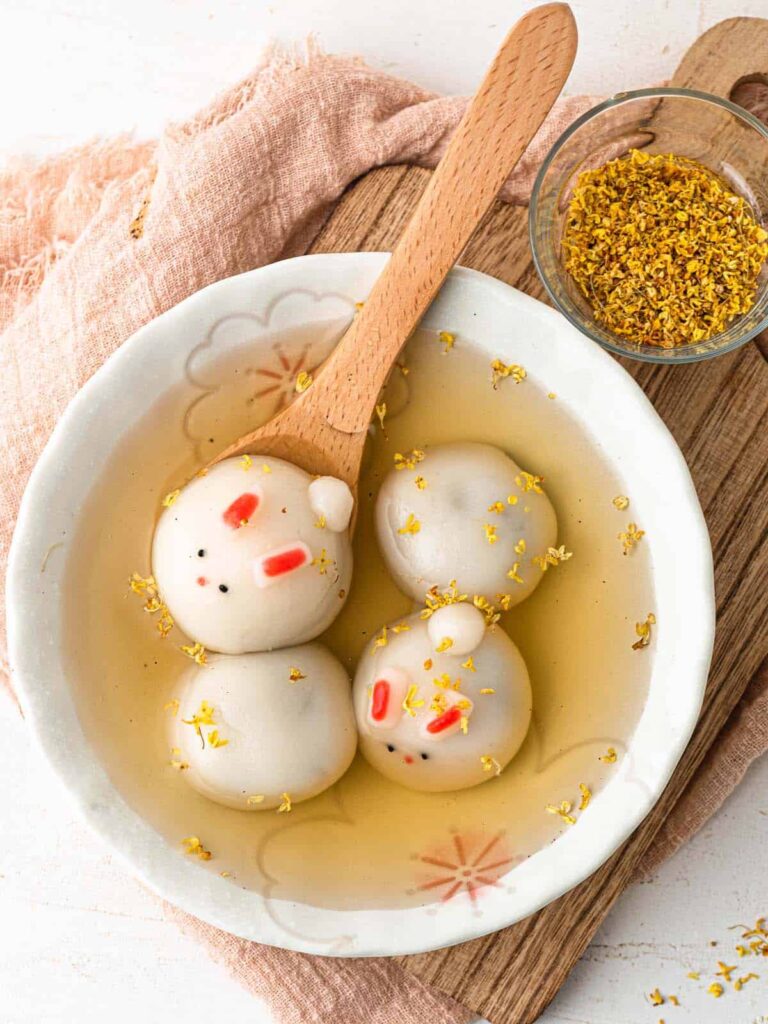
21) Tangyuan
Tangyuan are Chinese glutinous rice balls. They are also known as Yuan Xiao. This dessert is often enjoyed during special occasions like the Lantern Festival and the Winter Solstice.
The outer layer of tangyuan is made from glutinous rice flour. It has a soft, gooey texture similar to mochi. Inside, you will find a sweet, semi-runny filling. Common fillings include black sesame paste, peanut butter, or sweet red bean paste.
Tangyuan are usually served warm. They come in a plain or sweetened liquid, often a light syrup or broth. The warmth makes the texture even softer and more enjoyable.
You can easily prepare these at home. Make the dough with glutinous rice flour and water. For the filling, grind up ingredients like sesame seeds or peanuts, mix them with sugar and oil, then form them into small balls.
Once the dough and filling are ready, wrap the dough around the filling to form balls. Boil them in water until they float. Serve them in a bowl with your chosen sweet liquid, and enjoy this comforting and traditional dessert.
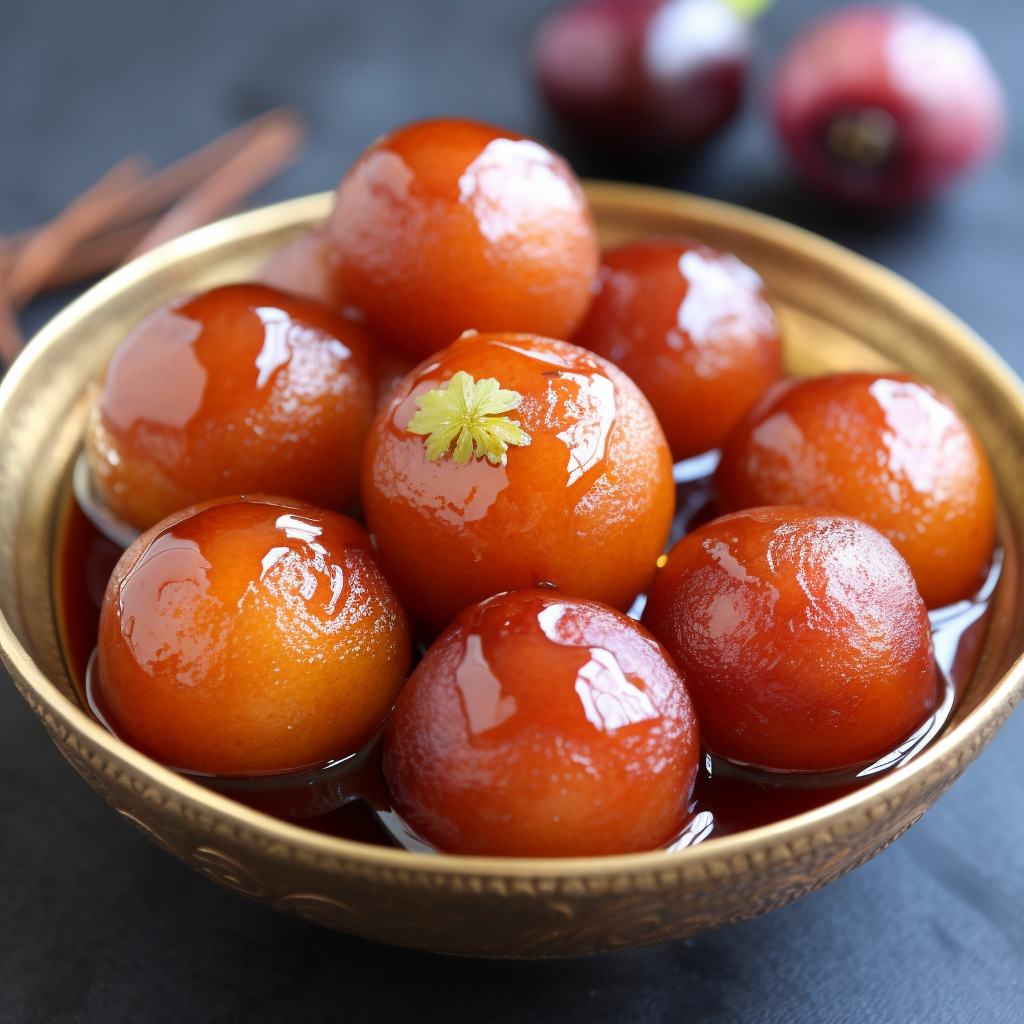
22) Gulab Jamun
Gulab Jamun is a popular dessert originating from India and loved across Asia. You make it from milk solids, which are known as khoya or mawa. These are kneaded into a dough, shaped into small balls, and deep-fried.
The fried dough balls are soaked in a sugar syrup flavored with cardamom, saffron, and sometimes rose water. This gives the dessert its sweet and aromatic taste.
The syrup is essential. It keeps the Gulab Jamuns moist and flavorful. As the balls rest in the syrup, they absorb the flavors and become soft and succulent.
Preparing Gulab Jamun can be relatively simple but requires patience and attention to detail. It’s a dessert often served at festive occasions like weddings and celebrations.
Gulab Jamun can be enjoyed warm or at room temperature. Some like to garnish it with nuts such as pistachios or almonds for added texture and taste.
This dessert has a melt-in-your-mouth texture that many find irresistible. It offers a wonderful ending to any meal with its rich, sweet flavor.
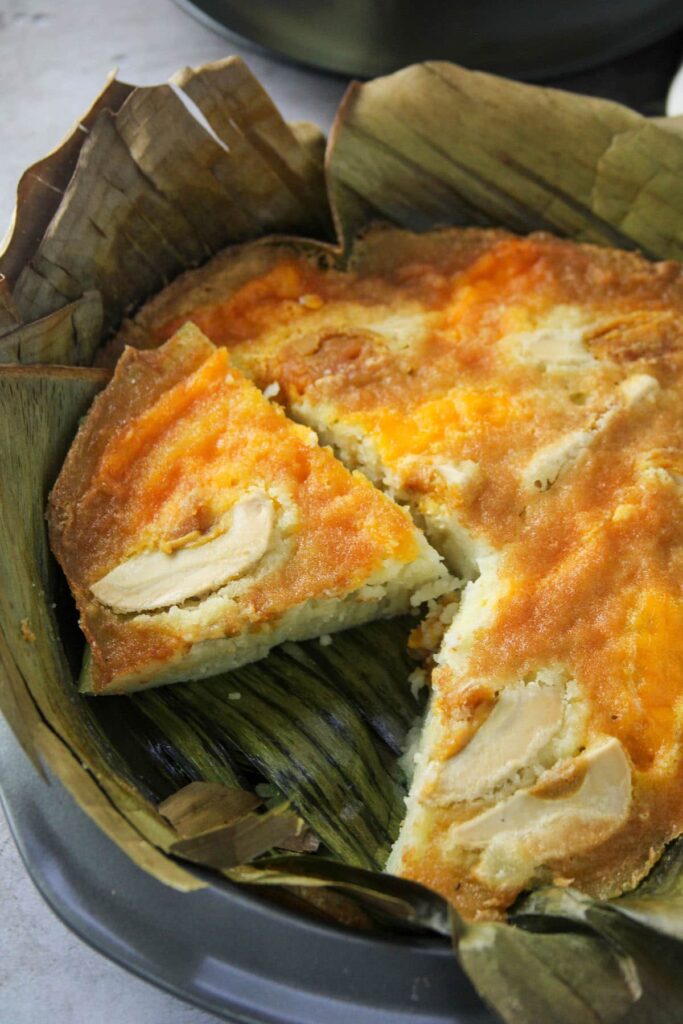
23) Bibingka
Bibingka is a traditional Filipino coconut-rice cake that is especially popular during the Christmas season. It’s known for its unique texture and flavor.
You make Bibingka from a mixture of rice flour, coconut milk, sugar, and eggs. The batter is often baked in a clay pot lined with banana leaves, which gives it a distinct aroma.
Toppings like salted eggs and cheese are added before baking. This gives Bibingka a blend of sweet and salty flavors. Some versions also sprinkle coconut or brown sugar on top.
When baking Bibingka, you want it to be golden brown, with a slightly crispy edge. A toothpick inserted in the center should come out clean when it’s ready.
Bibingka is best eaten fresh and warm, often served with a bit of fresh grated coconut and butter. It’s a favorite treat during the holiday season and can be enjoyed with a cup of hot chocolate or coffee.
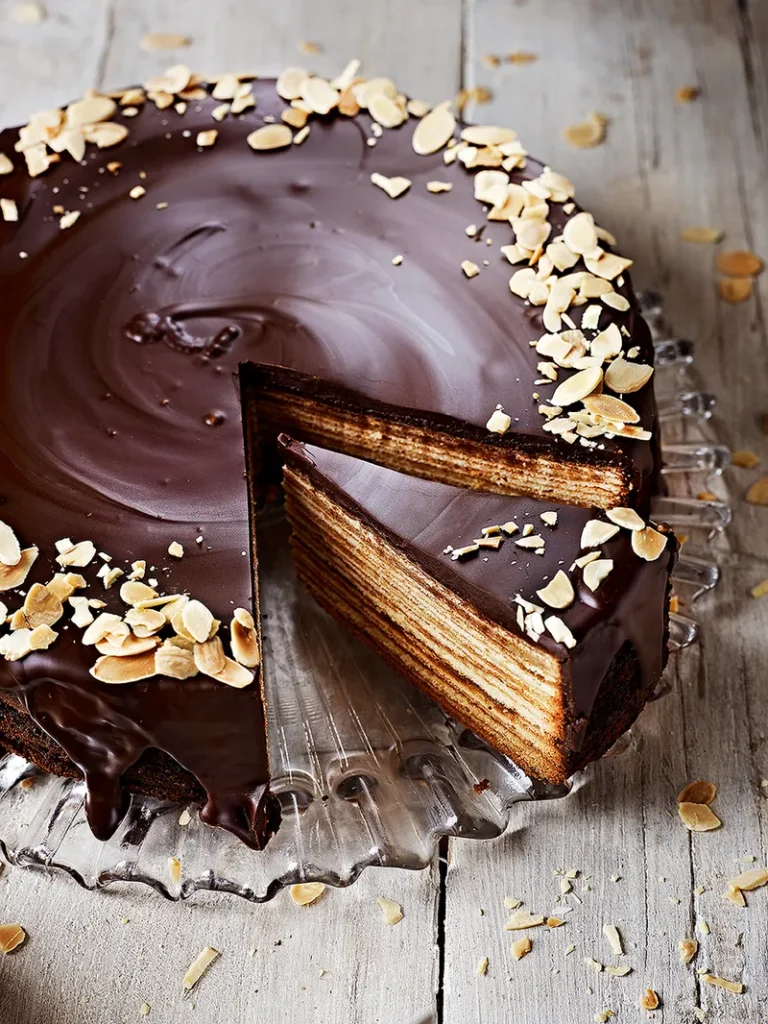
24) Baumkuchen
Baumkuchen is often called the “tree cake” because of its unique layered structure that resembles tree rings. This German dessert is especially popular in Japan, where it is highly regarded and often given as a gift for weddings and anniversaries.
Each layer of Baumkuchen is individually baked on a rotating spit, resulting in 15-20 layers of thin cake. This labor-intensive process creates a visually striking and delicious treat. Its delicate rings symbolize long life and happiness.
In Japan, Baumkuchen pairs perfectly with tea, fitting well into the local tradition of enjoying snacks in the afternoon, known as “oyatsu” or “kanshoku.” The cake’s aesthetic appeal, along with its rich, buttery flavor, has made it a favorite among Japanese and German dessert lovers alike.
The Cultural Significance of Asian Desserts
Asian desserts hold deep cultural meanings and are cherished for their flavors and symbolic values. Each dessert tells a story through historical roots and regional adaptations.
Historical Evolution
Asian desserts have centuries-old histories. For instance, Bingtanghulu, candied hawthorns on a stick, was popular during the Song Dynasty in China. People used it as a festive treat. Similarly, the Japanese confectionary Mochi has existed since the 8th century, initially part of religious offerings.
These traditional sweets often celebrated harvests and important festivals. Over time, they adapted to modern tastes. The method of making desserts has transformed, incorporating new ingredients and techniques. Yet, the essence and cultural ties remain strong.
Regional Variations
Asian desserts vary widely across regions. In Southeast Asia, you have Mango Sticky Rice, a Thai specialty enjoyed in many countries. It combines sticky rice with sweet mango, drizzled with coconut milk, creating a delectable treat popular on hot days.
Chinese regions boast their unique sweets like Pineapple Cake from Taiwan, symbolizing luck and prosperity. Meanwhile, Steamed Pear with Rock Sugar in northern China is cherished for its soothing properties, often consumed during colds.
In South Asia, Indian desserts such as Gulab Jamun and Rasgulla are known for their rich, syrupy sweetness, often served during weddings and festivals. These variations highlight the diverse cultural landscapes of Asia, where food plays a crucial role in everyday life and special occasions.
Common Ingredients in Asian Desserts
Asian desserts often feature unique ingredients that contribute to their distinctive flavors and textures. You will find ingredients like rice, beans, and tropical fruits making frequent appearances.
Rice and Rice Flour
Rice is a staple in many Asian desserts. It is used in its whole form or as rice flour.
Sweet rice or glutinous rice is commonly used for its sticky texture. It is key in popular treats like mochi and sticky rice with mango.
Rice flour creates smooth textures in desserts such as Korean rice cakes and dim sum. It’s also used to thicken batters for fried sweets like banana fritters.
Using rice-based ingredients allows for gluten-free options and adds a unique chewiness.
Beans and Pulses
Beans, especially red beans, play a significant role in Asian sweets.
Red bean paste, made from adzuki beans, is popular in Japanese and Chinese desserts. It fills items like dorayaki pancakes and mooncakes.
Mung beans are another common ingredient, often found in mung bean cakes and sweet soups.
These ingredients provide a natural sweetness and a rich, creamy texture when cooked down into pastes.
Coconut and Tropical Fruits
Coconut and tropical fruits like mango and banana are prevalent in many Asian sweets.
Coconut milk and coconut cream are used for their rich, creamy flavor. They are essential in desserts like Thai coconut sticky rice and Vietnamese coconut jelly.
Tropical fruits such as mango and banana are frequently used. Mango sticky rice and fried bananas are popular choices that highlight the sweetness and juiciness of these fruits.
These ingredients help create refreshing and flavorful desserts that showcase the richness of Asia’s tropical climate.
Health Benefits of Traditional Ingredients
Traditional Asian desserts often incorporate ingredients known for their health benefits. These ingredients can offer antioxidant properties and essential nutrients, which can be beneficial to your health.
Antioxidant Properties
Green tea is a common ingredient in many Asian desserts. It contains catechins, which are potent antioxidants that can help reduce inflammation and protect cells from damage. Consuming green tea-based desserts might support your heart health and improve your metabolic function.
Ginger is another key ingredient. It is rich in gingerols and shogaols, compounds with strong antioxidant activities. These antioxidants can help reduce oxidative stress and lower the risk of chronic diseases.
Sesame seeds, used in treats like sesame balls, are packed with lignans and vitamin E. These antioxidants can combat free radicals in your body, potentially reducing the risk of various diseases.
Nutritional Value
Mung beans, found in many Asian sweets like mooncakes and pastries, are excellent sources of protein and fiber. They help maintain healthy digestion and can keep you feeling full longer. Additionally, mung beans provide vitamins such as vitamin B6 and minerals like magnesium and potassium.
Red beans (azuki beans) are used in desserts like red bean paste. They are rich in iron, which is vital for maintaining healthy blood cells. They also offer a good amount of folate and thiamine, contributing to overall energy levels and brain function.
Sweet potatoes, often included in desserts, are high in beta-carotene and vitamin C. These nutrients support your immune system and skin health. Additionally, sweet potatoes are a good source of dietary fiber, which can aid in digestion.
Using these traditional ingredients in your diet can provide a variety of nutritional benefits while allowing you to enjoy delicious sweets.
